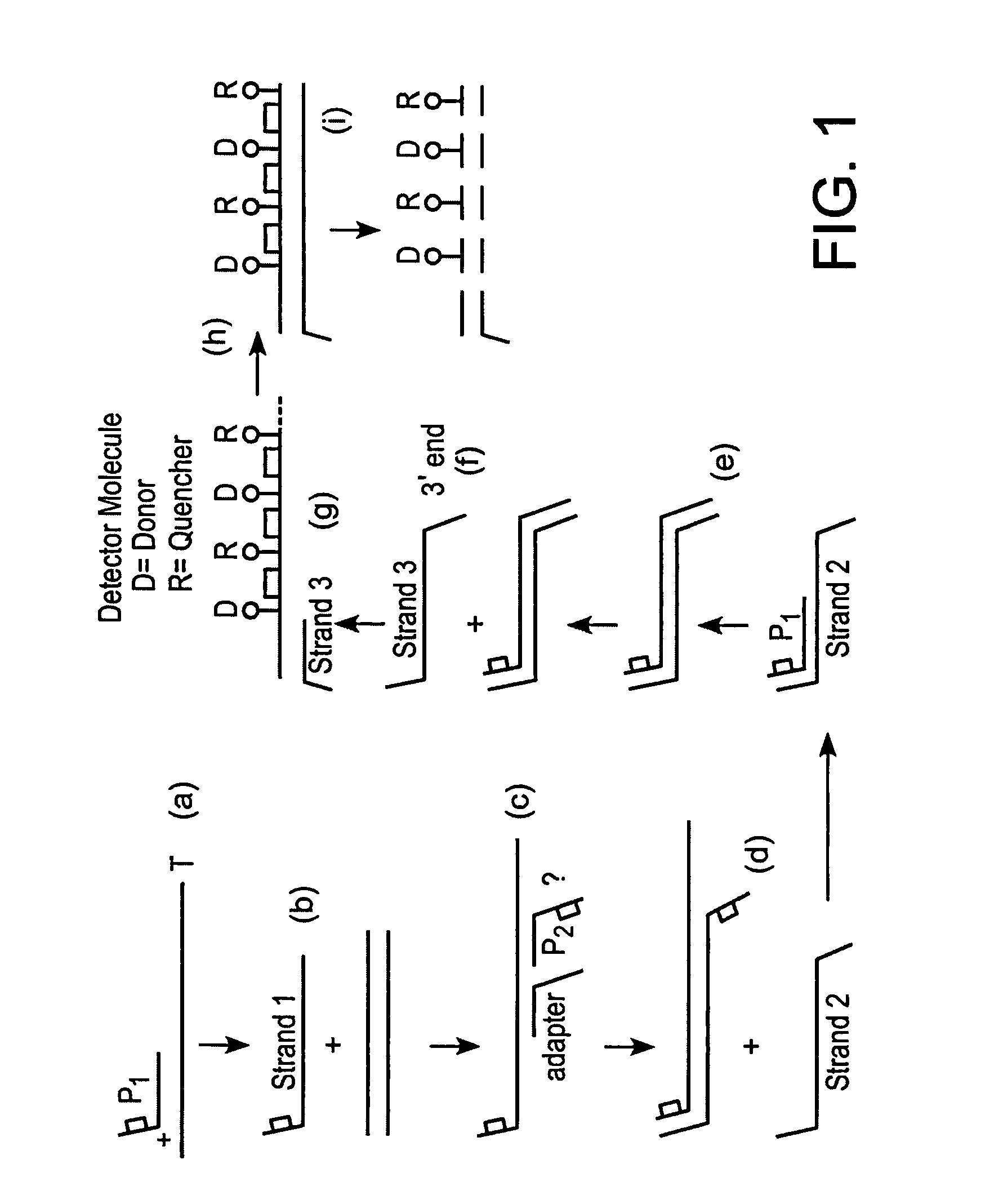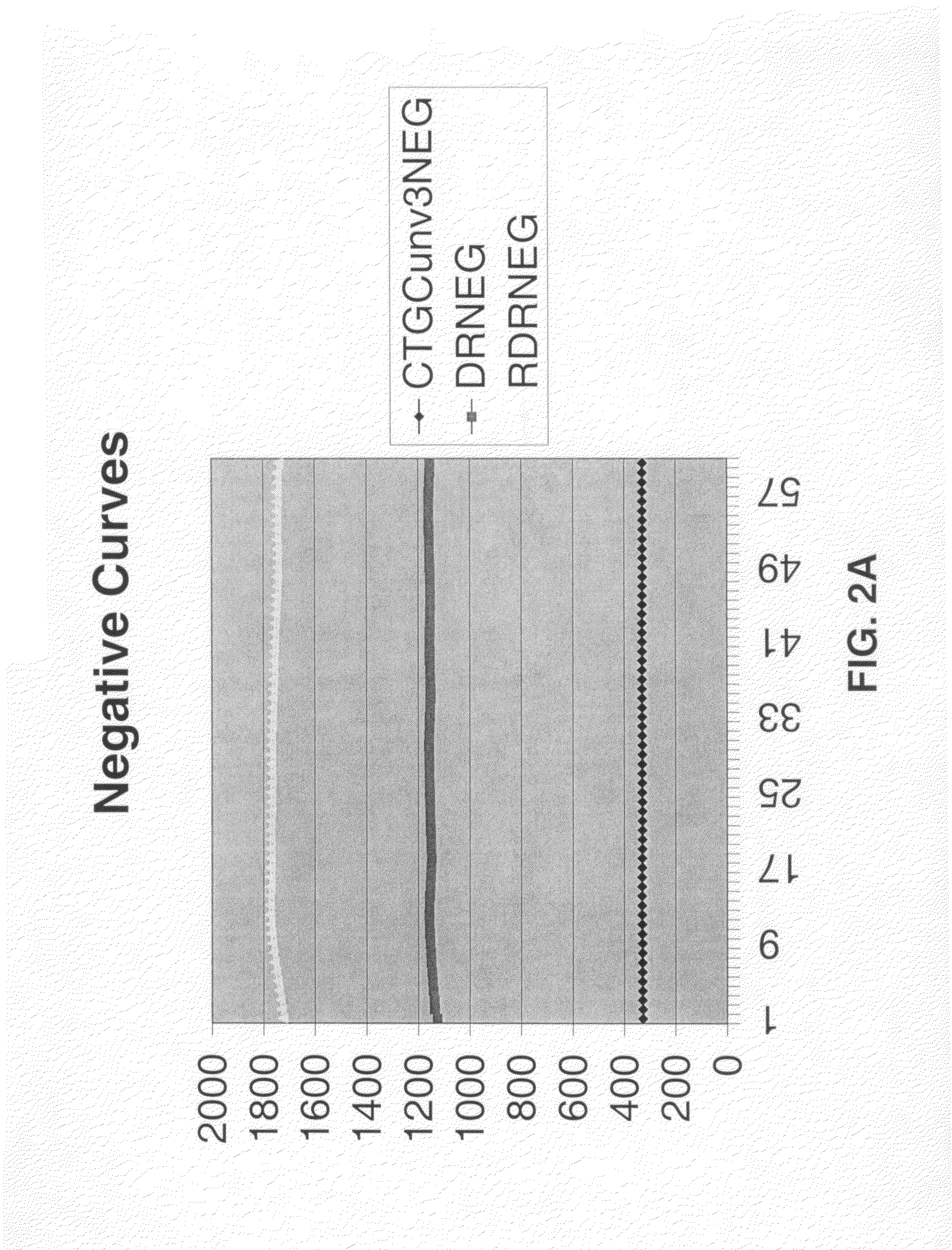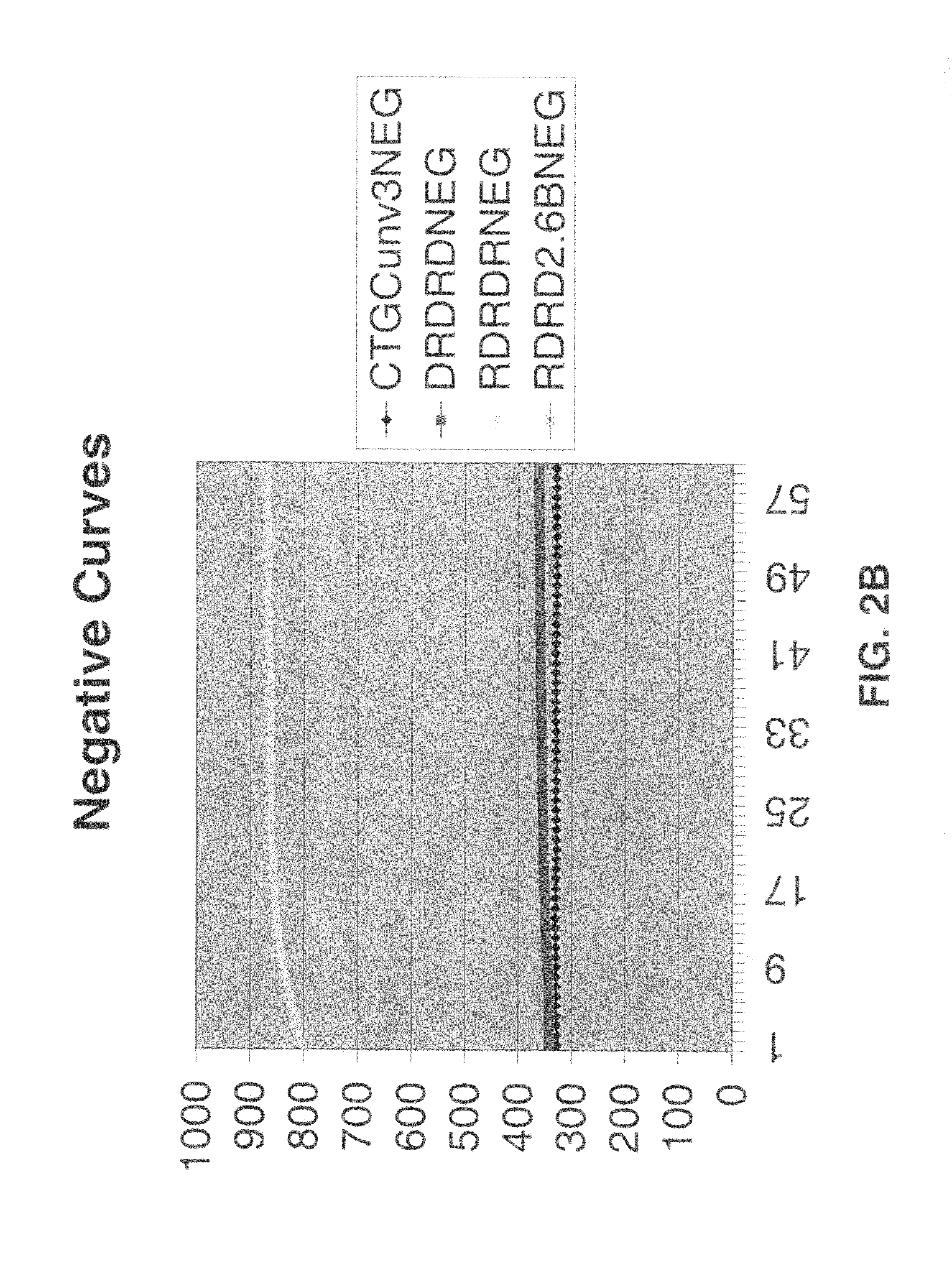Multiple fluorophore detector system
a detector system and fluorophore technology, applied in the field of nucleic acid target sequence detection methods, can solve the problems of reducing performance, reducing detection efficiency, and reducing detection efficiency, so as to increase detection sensitivity and efficiency, and improve detection efficiency
- Summary
- Abstract
- Description
- Claims
- Application Information
AI Technical Summary
Benefits of technology
Problems solved by technology
Method used
Image
Examples
example 1
[0049]SDA reactions may be performed using amplification primers and the detector oligonucleotide of the present invention. In this example, the detector is designed to detect a region of the HIV-1 pol gene. SDA may be carried out at about 52° C. in the presence of at least one, preferably 250, copies of a cloned, double-stranded DNA target nucleic acid using 500 nM amplification primers, 50 nM bumper primers and 200 nM detector oligonucleotide. Control reactions are carried out in the absence of the double-stranded target nucleic acid. Detectors are fluorescently labeled with multiple donor fluorophore / quencher fluorophore pairs (either Rhodamine / DABCYL or Fluorescein / DABCYL), which are separated by a BsoBI recognition sequence and are configured in close proximity. Donor fluorescence is monitored during the course of the reaction.
[0050]Donor fluorescence increases significantly during the course of the reaction when target DNA is present, indicating that the BsoBI restriction endo...
example 2
[0051]SDA reactions were performed using amplification primers and detector oligonucleotides of the present invention to detect HIV RNA transcript. SDA was carried out as follows: target buffer was prepared at 50 mM KOB, 120 mM bicine and was spiked with the RNA target nucleic acid at either 0 copies per reaction or 2000 copies per reaction. 65 μl of target buffer prepared with the indicated reagent concentrations was spotted into blank wells. 150 μl of sample buffer was dispensed into the target buffer wells, the solution was mixed, and the wells were placed at 50° C. for 20 minutes. RT reagent was prepared as indicated below.
[0052]
RT CONC.ADJ.ADJUSTEDReagent[Stock]UnitsDESIREDCONC.μl / rx24VOLUMERoDiH2O29.35704.40810.1BSA5000c23.24102.491.3331.9836.8DMSO100%8.0435.4623.05553.12636.1PAB CONC.20X0.120.511.6740.0046.0MG194mM6.5028.679.60230.50265.1PAB MIX: ARALT.2 120 μM, 40 μM AL.1AV, bumpers11.2 μMTotal65.001560.001794.0NO RTRoDiH2O18.58446.04512.9BSA5000ng / μl32.89131.541.3231.5736.3...
PUM
 Login to View More
Login to View More Abstract
Description
Claims
Application Information
 Login to View More
Login to View More - R&D
- Intellectual Property
- Life Sciences
- Materials
- Tech Scout
- Unparalleled Data Quality
- Higher Quality Content
- 60% Fewer Hallucinations
Browse by: Latest US Patents, China's latest patents, Technical Efficacy Thesaurus, Application Domain, Technology Topic, Popular Technical Reports.
© 2025 PatSnap. All rights reserved.Legal|Privacy policy|Modern Slavery Act Transparency Statement|Sitemap|About US| Contact US: help@patsnap.com



